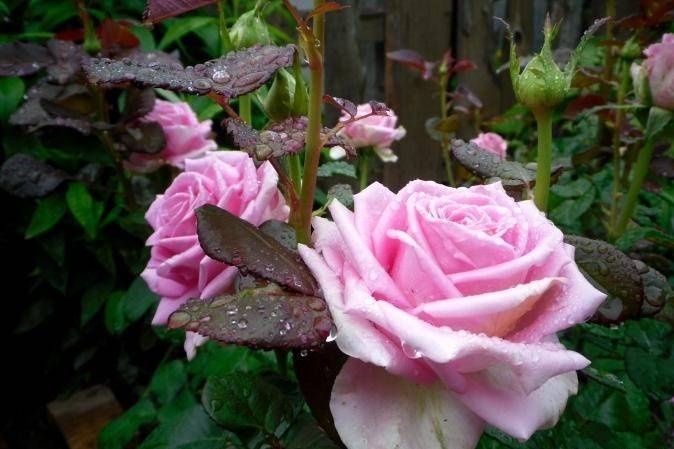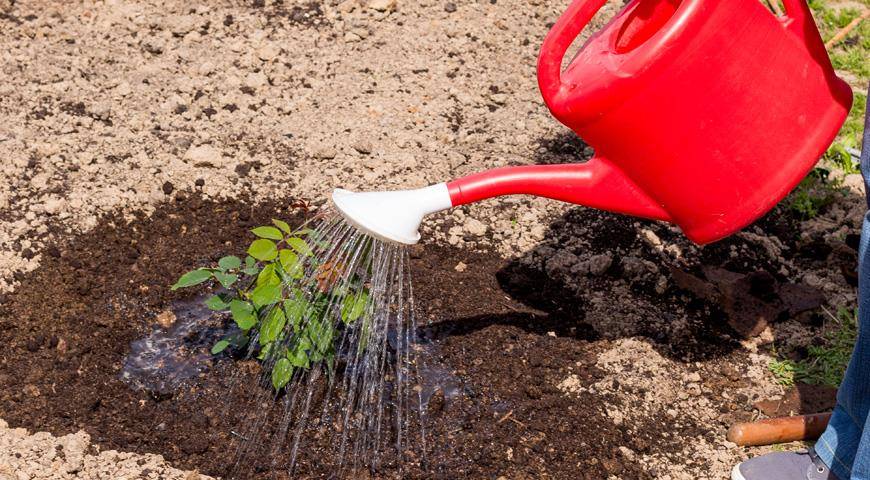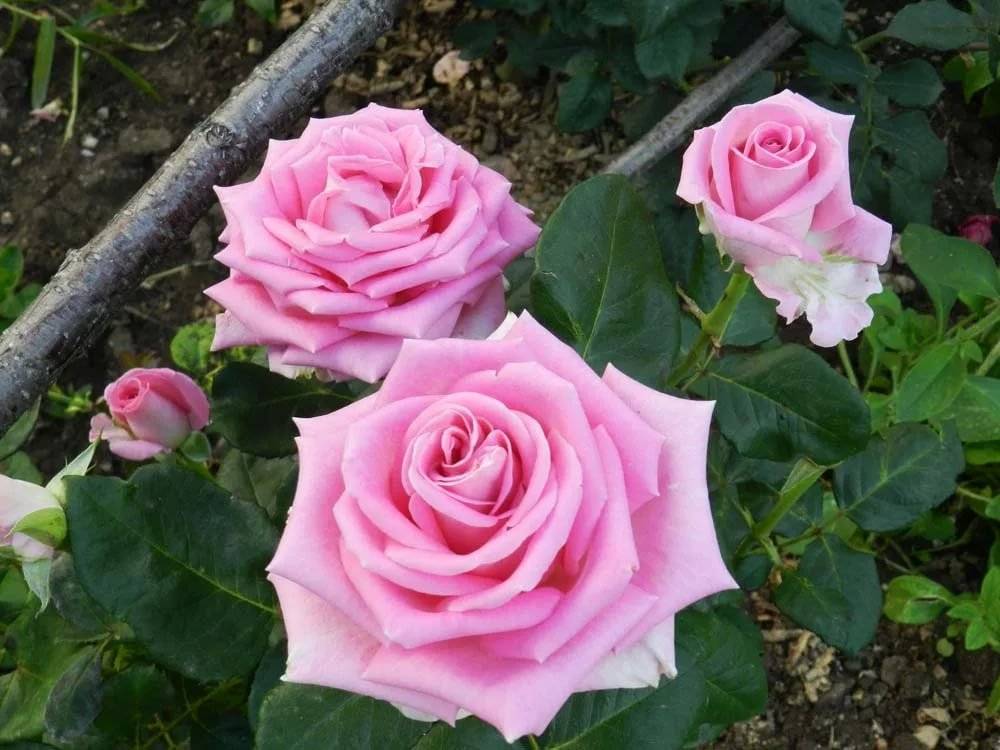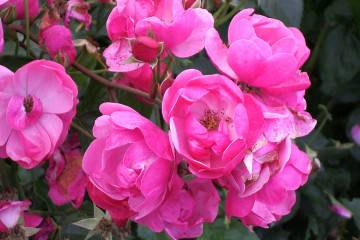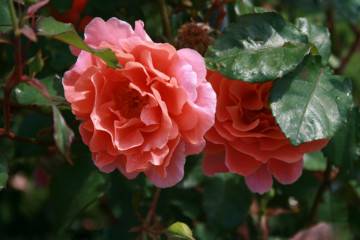Rose Aqua
Content:
Favorite by many gardeners, the variety of hybrid tea roses Aqua got its name for an interesting feature. Rose petals constantly change their color, becoming darker and lighter depending on the weather and light.
Rose Aqua (Aqua) - what kind of variety, history of creation
The authorship of the variety belongs to the breeders of the Dutch company Schreurs (Petrus Nicolaas Johannes). The planting material is supplied to the commercial network under the patented name Aqua!®which is a trademark. In the catalogs, the rose appears under the code SCHrenat. At the Flowers Expо exhibition in Moscow, the variety in the Show category was awarded the Syracuse Rose Society award.
Brief description, characteristic
Erect bushes grow up to 80-100 cm in height and spread up to 60 cm in width. Glossy green leaf of medium size. There are very few thorns. The stems almost always end in a single bud, which looks exceptionally beautiful. It is goblet-shaped up to 5 cm in height and very resilient. The petals are bent back as the corolla opens. The flower has up to 40 matte petals up to 10 cm in length. Until wilting, the corolla remains dense.
Frost resistance up to -23 ° С. Very high resistance to powdery mildew, but moderate to black spot. It does not tolerate rain, from which the buds can even rot, therefore, for industrial purposes, the rose is planted only in greenhouses and greenhouses. With heat above 35 ° C, flowering worsens, the buds become smaller. The optimum temperature for flowering is 25 ° C. In the scorching sun, the petals fade, but even in the shade, the rose will not bloom in full force. The aroma is pleasant, gentle, not strong.
Advantages and disadvantages of the variety
Pros of the variety:
- straight shoots without thorns are ideal for cutting;
- high resistance to powdery mildew;
- high decorativeness from the bud stage to full disclosure;
- cut flowers stay fresh for up to 10 days.
Disadvantages:
- low frost resistance;
- medium resistance to black spot;
- does not tolerate rain;
- in heat above 35 ° C it burns out, the buds become smaller;
- does not tolerate shadows.
Growing a flower
You can buy a seedling in a specialized garden center or nursery. The delivery of planting material is carried out in containers, which is an ideal format that allows you to carefully preserve the root system. The shelf life of such seedlings is about 3 months.
It is best to plant with seedlings with a closed root system. The survival rate of bushes with open roots is worse.
The preferred planting time is autumn, but it is also possible in the spring.Autumn planting with obligatory shelter is good because by the time of the first flowering the bush has time to build up a more powerful root ball, that is, to accumulate more vitality. In late September or early October (3 weeks before frost), they are planted in open ground.
Seat selection
The best place is in the sun, but not on the south side. Shelter from cold drafts is necessary. It is also not worth planting in a place completely closed on all sides, since such conditions are ideal for the development of black spot. It is best to plant a bush on the east or north side of the site, so that a house or tall trees protect it from the wind from the north.
How to prepare the soil and flower for planting
It is recommended to dig up the site 1 month before planting and add organic matter (humus, peat, compost, rotted manure) to it. A suitable soil acidity level is pH = 5.8-6.5. If the soil is loamy, then it is improved by adding rotted manure and river sand.
Planting procedure step by step
The step-by-step sequence of actions is as follows:
- They dig planting holes according to the size of the root ball so that there is a gap of another 5-7 cm per drainage layer.
- Small pebbles or expanded clay mixed with sand are poured onto the bottom so that the water does not stagnate at the roots.
- The distance between the planting pits is at least 50 cm.
- 12 hours before planting, the open root system must be soaked in a bucket of water.
- A bucket of water is poured onto the bottom of the landing pits.
- When the roots are lowered into the hole, the scion is buried 3 cm.
- The backfill is performed with fertile soil, to which 50 g of superphosphate is added for each bush.
- All bushes are watered abundantly.
- The near-stem circle is mulched with humus.
Plant care
The rose needs to be looked after almost every day. But these chores are not difficult and very pleasant, because the reward will be an exceptionally beautiful flowering.
Watering rules and humidity
Water the bushes at the root, making sure that the water does not get on the leaves and flowers. It is best to do this early in the morning or after sunset. The next day, the soil is loosened 5 cm deep. In summer, watering is required on average once every 3 days or every other day, depending on the air temperature.
Top dressing and soil quality
Fertilizers are applied in spring and early autumn after pruning, as well as in summer. In the spring, ammonium nitrate (50 g per 10 l of water) is applied, in the fall - potassium-phosphorus fertilizers. In the summer, organic fertilizing is required at a frequency of 1 every 3 weeks.
Pruning and replanting
Bushes need formative pruning from spring to autumn. Spring is the most important. The tops of the shoots are removed. Leave only 15 cm segments with 2-3 buds on each branch. In the summer, wilted flowers are cut. In the fall, remove all damaged branches.
Features of wintering a flower
As soon as frost approaches, the bushes should be covered. The remaining leaves and flowers are removed from them. The root collar is spud. The shelter is made of several layers of agrotextile. In the spring, the shelter is removed by examining the bush in order to remove wild growth in time.
Blooming rose
Throughout the summer and almost all September, the rose blooms continuously. If the bush is planted in a greenhouse, then in October you can get flowers for cutting.
A period of activity and rest
Bushes wake up in mid-June. The first flowering usually occurs in the second half of June. The growing season ends in early October. The rest of the year is a dormant period.
Care during and after flowering
During flowering, it is necessary to monitor the moisture content of the soil, it should not dry out too much. In extreme heat at dawn, sprinkling is recommended, but only on the leaves. After the flowers wither, they must be cut off. The crown of the shoot is removed to the first bud.
What to do if it does not bloom
If the rose does not expel the buds, then this indicates a lack of nutrition. Even in the shade, the plant tries to grow even weak and skinny, but still at least such buds.It is necessary to apply phosphorus-potassium fertilizer and better monitor watering and traces of disease and pests.
Flower propagation
Like other varieties of hybrid tea roses, Aqua propagates by cuttings. The optimal time for cutting branches is the first half of June. Sections about 15 cm long with 3 buds are required. They are dropped into the soil by 3 cm, and then covered with a cap from a cut plastic bottle. Every day, the lid is opened to water the cuttings, and then closed back. The optimal time for forcing green shoots is 3 weeks.
Diseases, pests and ways to control them
With high humidity and warm weather, as well as with an excess of nitrogen in the soil, roses infect fungal diseases.
- Rust. For prevention, the bushes are treated in spring with Bordeaux liquid (2-3 treatments with an interval of 7-10 days).
- Downy mildew. The affected foliage is torn off and the rose is treated with a suitable fungicide.
- Gray rot. They fight it in the same way as with powdery mildew.
Of the pests, roses are threatened by:
- Leaf roll. Its caterpillars are harvested, and the bushes are treated with insecticide.
- Moths. They are given out by the eaten areas of leaves. Spraying with insecticides is necessary.
- Spider mite. It reproduces especially strongly in dry weather. Against it, they are treated with acaricides, for example, phytoverm.
- Nematodes. The roots are striking. To scare away, calendula is planted next to it. But when a pest is identified, the soil is spilled several times with a solution of actara.
Aqua should not be recommended for novice gardeners, since agricultural technology, although not too complicated, requires regular participation. If growing roses is a favorite pastime, then in the collection it is definitely worth having at least one bush of this iridescent variety.

